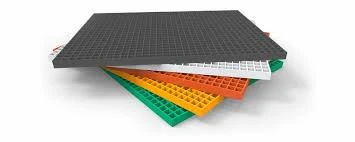
-
 Afrikaans
Afrikaans -
 Albanian
Albanian -
 Amharic
Amharic -
 Arabic
Arabic -
 Armenian
Armenian -
 Azerbaijani
Azerbaijani -
 Basque
Basque -
 Belarusian
Belarusian -
 Bengali
Bengali -
 Bosnian
Bosnian -
 Bulgarian
Bulgarian -
 Catalan
Catalan -
 Cebuano
Cebuano -
 China
China -
 China (Taiwan)
China (Taiwan) -
 Corsican
Corsican -
 Croatian
Croatian -
 Czech
Czech -
 Danish
Danish -
 Dutch
Dutch -
 English
English -
 Esperanto
Esperanto -
 Estonian
Estonian -
 Finnish
Finnish -
 French
French -
 Frisian
Frisian -
 Galician
Galician -
 Georgian
Georgian -
 German
German -
 Greek
Greek -
 Gujarati
Gujarati -
 Haitian Creole
Haitian Creole -
 hausa
hausa -
 hawaiian
hawaiian -
 Hebrew
Hebrew -
 Hindi
Hindi -
 Miao
Miao -
 Hungarian
Hungarian -
 Icelandic
Icelandic -
 igbo
igbo -
 Indonesian
Indonesian -
 irish
irish -
 Italian
Italian -
 Japanese
Japanese -
 Javanese
Javanese -
 Kannada
Kannada -
 kazakh
kazakh -
 Khmer
Khmer -
 Rwandese
Rwandese -
 Korean
Korean -
 Kurdish
Kurdish -
 Kyrgyz
Kyrgyz -
 Lao
Lao -
 Latin
Latin -
 Latvian
Latvian -
 Lithuanian
Lithuanian -
 Luxembourgish
Luxembourgish -
 Macedonian
Macedonian -
 Malgashi
Malgashi -
 Malay
Malay -
 Malayalam
Malayalam -
 Maltese
Maltese -
 Maori
Maori -
 Marathi
Marathi -
 Mongolian
Mongolian -
 Myanmar
Myanmar -
 Nepali
Nepali -
 Norwegian
Norwegian -
 Norwegian
Norwegian -
 Occitan
Occitan -
 Pashto
Pashto -
 Persian
Persian -
 Polish
Polish -
 Portuguese
Portuguese -
 Punjabi
Punjabi -
 Romanian
Romanian -
 Russian
Russian -
 Samoan
Samoan -
 Scottish Gaelic
Scottish Gaelic -
 Serbian
Serbian -
 Sesotho
Sesotho -
 Shona
Shona -
 Sindhi
Sindhi -
 Sinhala
Sinhala -
 Slovak
Slovak -
 Slovenian
Slovenian -
 Somali
Somali -
 Spanish
Spanish -
 Sundanese
Sundanese -
 Swahili
Swahili -
 Swedish
Swedish -
 Tagalog
Tagalog -
 Tajik
Tajik -
 Tamil
Tamil -
 Tatar
Tatar -
 Telugu
Telugu -
 Thai
Thai -
 Turkish
Turkish -
 Turkmen
Turkmen -
 Ukrainian
Ukrainian -
 Urdu
Urdu -
 Uighur
Uighur -
 Uzbek
Uzbek -
 Vietnamese
Vietnamese -
 Welsh
Welsh -
 Bantu
Bantu -
 Yiddish
Yiddish -
 Yoruba
Yoruba -
 Zulu
Zulu
frp field tank
Understanding FRP Field Tanks Innovation in Storage Solutions
In recent years, the industrial landscape has witnessed a significant evolution in storage technology, particularly with the introduction of Fiber Reinforced Plastic (FRP) field tanks. These tanks have become an essential solution for various applications, including water storage, chemical containment, and fuel storage. Their unique composition and design offer several advantages over traditional storage methods, aligning with the growing demand for efficiency, durability, and environmental sustainability.
What are FRP Field Tanks?
FRP field tanks are made from a composite material that combines plastic with fibers such as glass or carbon. This material is molded into various shapes and sizes, creating tanks that provide exceptional strength and resistance to corrosion. Unlike conventional metal or concrete tanks, FRP tanks can be customized for specific uses, making them versatile for different industries, including agriculture, mining, and petrochemical sectors.
Advantages of FRP Field Tanks
1. Corrosion Resistance One of the primary benefits of FRP tanks is their resistance to corrosion. Traditional tanks made from metals are susceptible to rust, which can lead to leaks and contamination. FRP tanks, however, can withstand harsh chemical environments, ensuring the integrity of the stored substances.
2. Lightweight and Durable FRP tanks are significantly lighter than their metal counterparts, making them easier to transport and install. Despite their lightweight nature, they boast impressive durability, capable of withstanding extreme temperatures and environmental conditions.
3. Customizability FRP technology allows for the creation of tanks in diverse shapes and sizes to meet specific needs. Whether it’s a small agricultural tank for irrigation or a large industrial tank for chemical storage, the flexibility in design is a key advantage.
4. Cost-Effectiveness While the initial investment in FRP technology might be higher compared to conventional materials, the long-term savings derived from lower maintenance costs, reduced risk of leaks, and longer lifespan make FRP tanks a cost-effective solution.
frp field tank

5. Environmental Benefits FRP tanks can be designed with eco-friendly processes in mind. Their ability to prevent leaks minimizes the risk of environmental contamination, making them a preferred choice for organizations prioritizing sustainability.
Applications of FRP Field Tanks
FRP tanks find extensive applications across various sectors. In agriculture, they are used for storing water and fertilizers, enhancing irrigation systems' efficiency. The chemical industry benefits from FRP’s resistance to corrosive substances, providing safe storage for hazardous materials. In the oil and gas sector, FRP tanks are employed for fuel storage, where durability and leak prevention are critical.
Moreover, FRP tanks are increasingly being utilized in potable water systems, where compliance with health and environmental standards is paramount. Their non-reactive nature ensures that water quality is maintained, making them a reliable choice for municipal water systems.
Challenges and Considerations
While FRP field tanks offer numerous benefits, there are challenges that need to be addressed. The production process of FRP can be energy-intensive, and the recycling of FRP materials remains a concern. Additionally, proper installation and maintenance are crucial to maximize the lifespan and effectiveness of the tanks. Therefore, it’s essential for users to work with reputable manufacturers and adhere to best practices.
Conclusion
FRP field tanks represent a significant advancement in storage technology, providing a versatile, durable, and environmentally friendly solution for various storage needs. As industries continue to evolve and prioritize sustainability, FRP tanks are poised to play a critical role in meeting these demands. With their innovative design and exceptional performance capabilities, FRP tanks are not just a trend but a forward-thinking solution for the future of storage.









